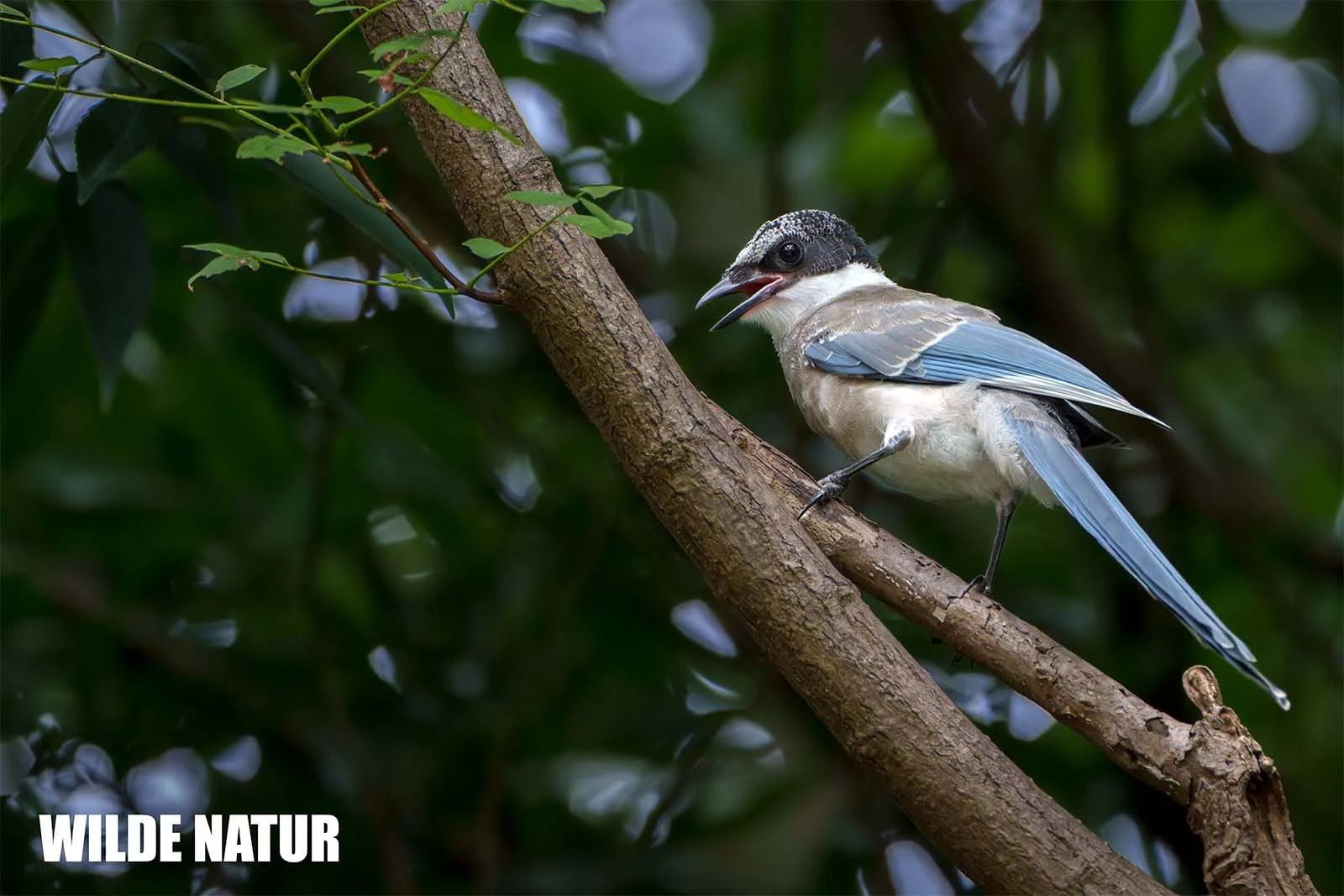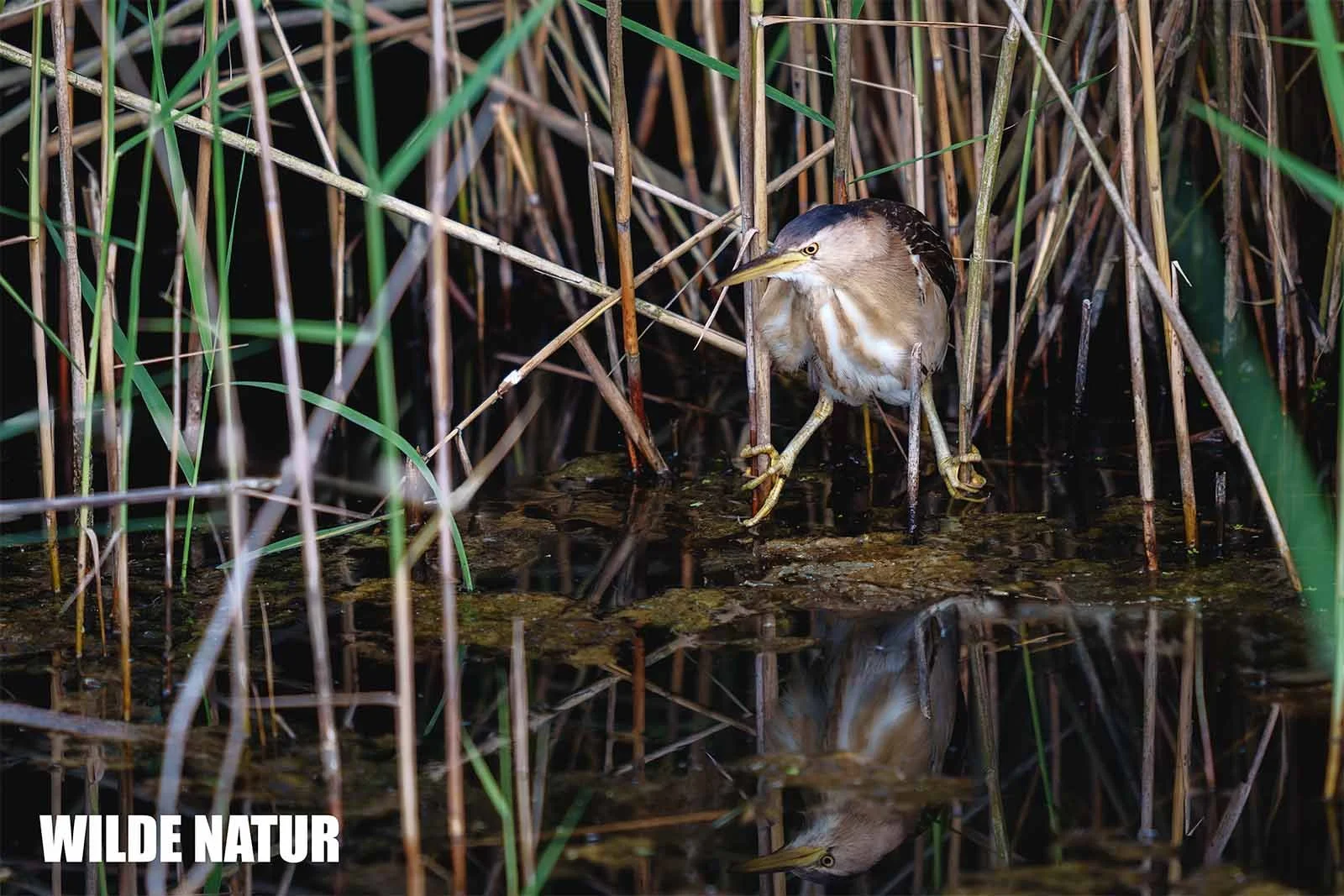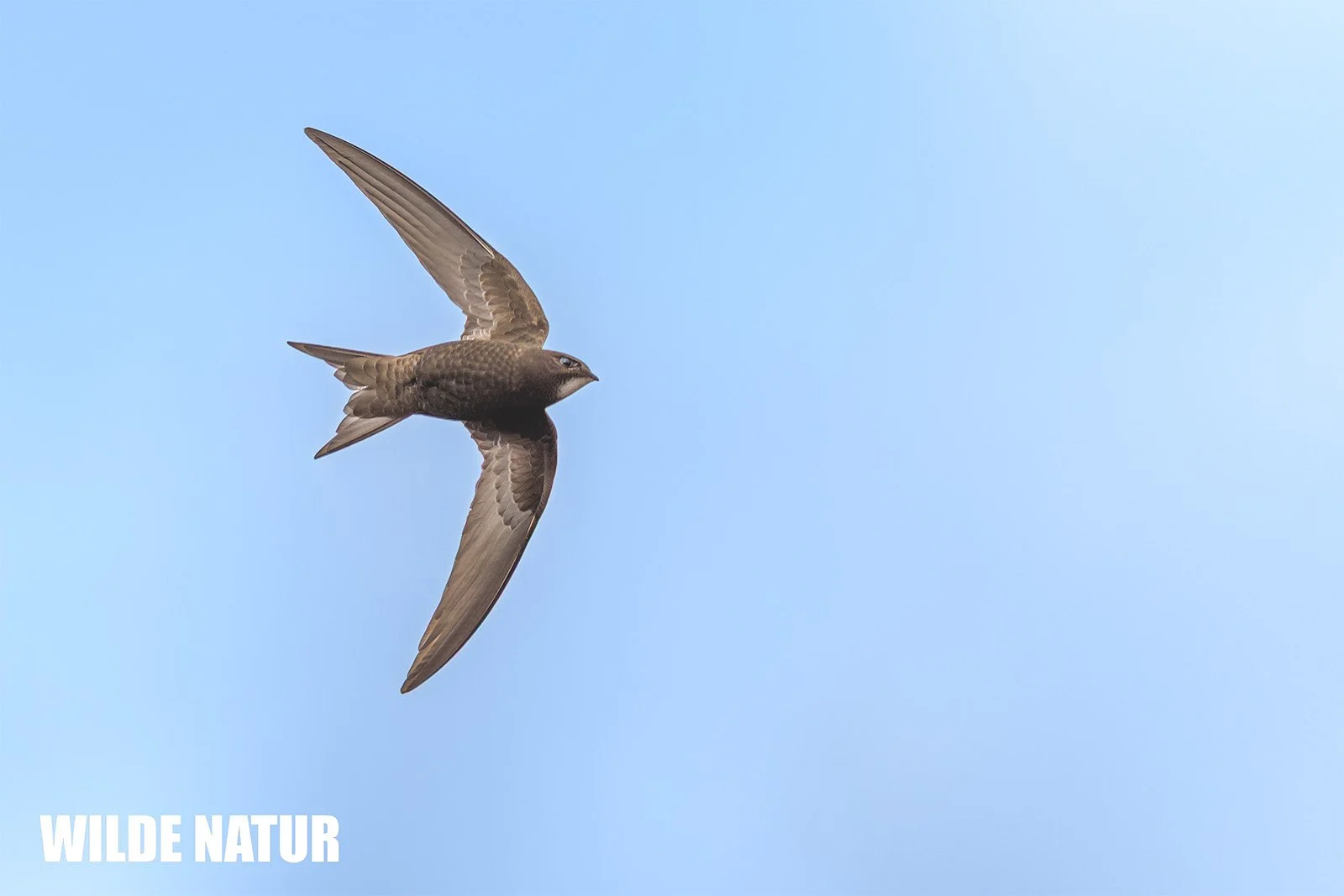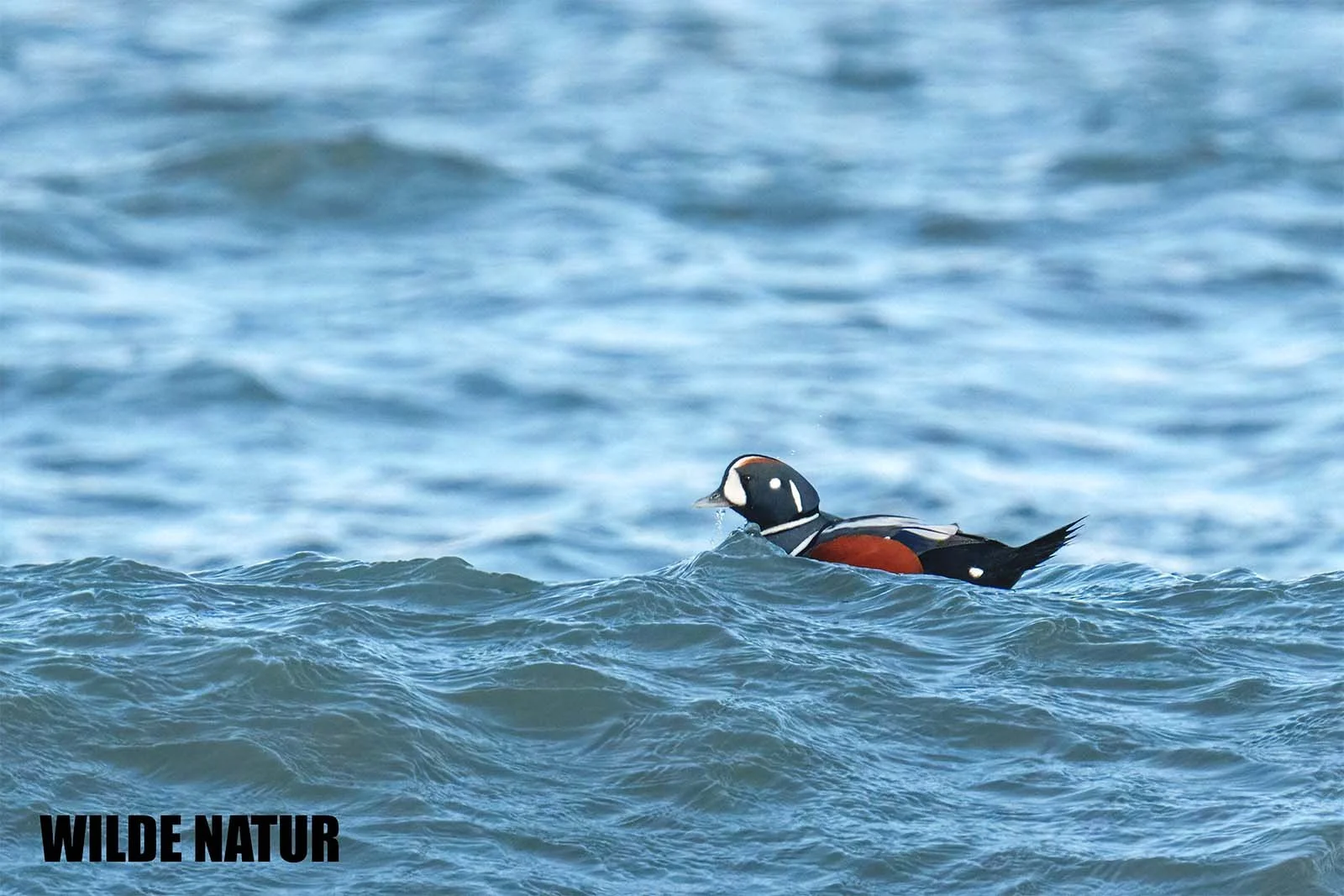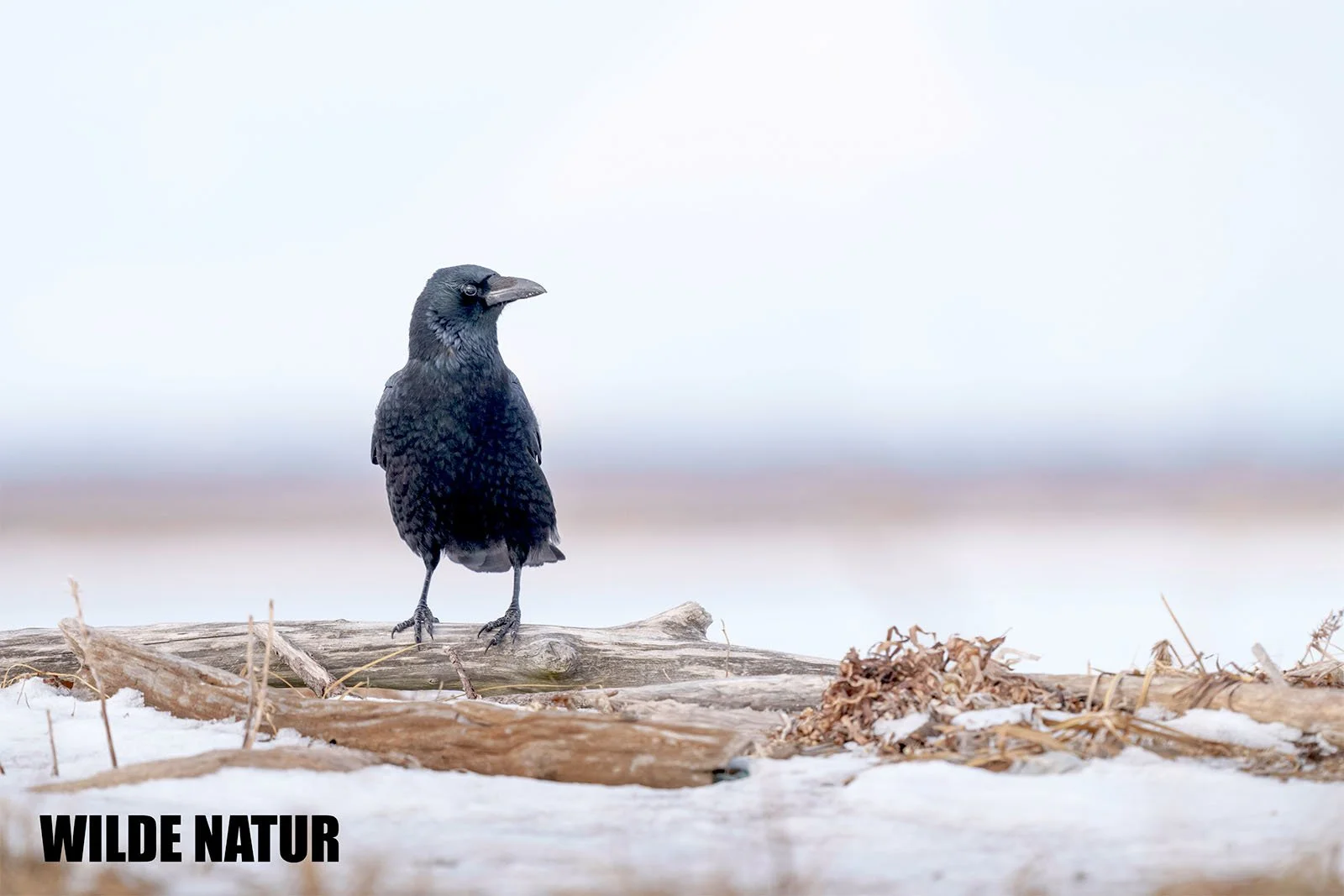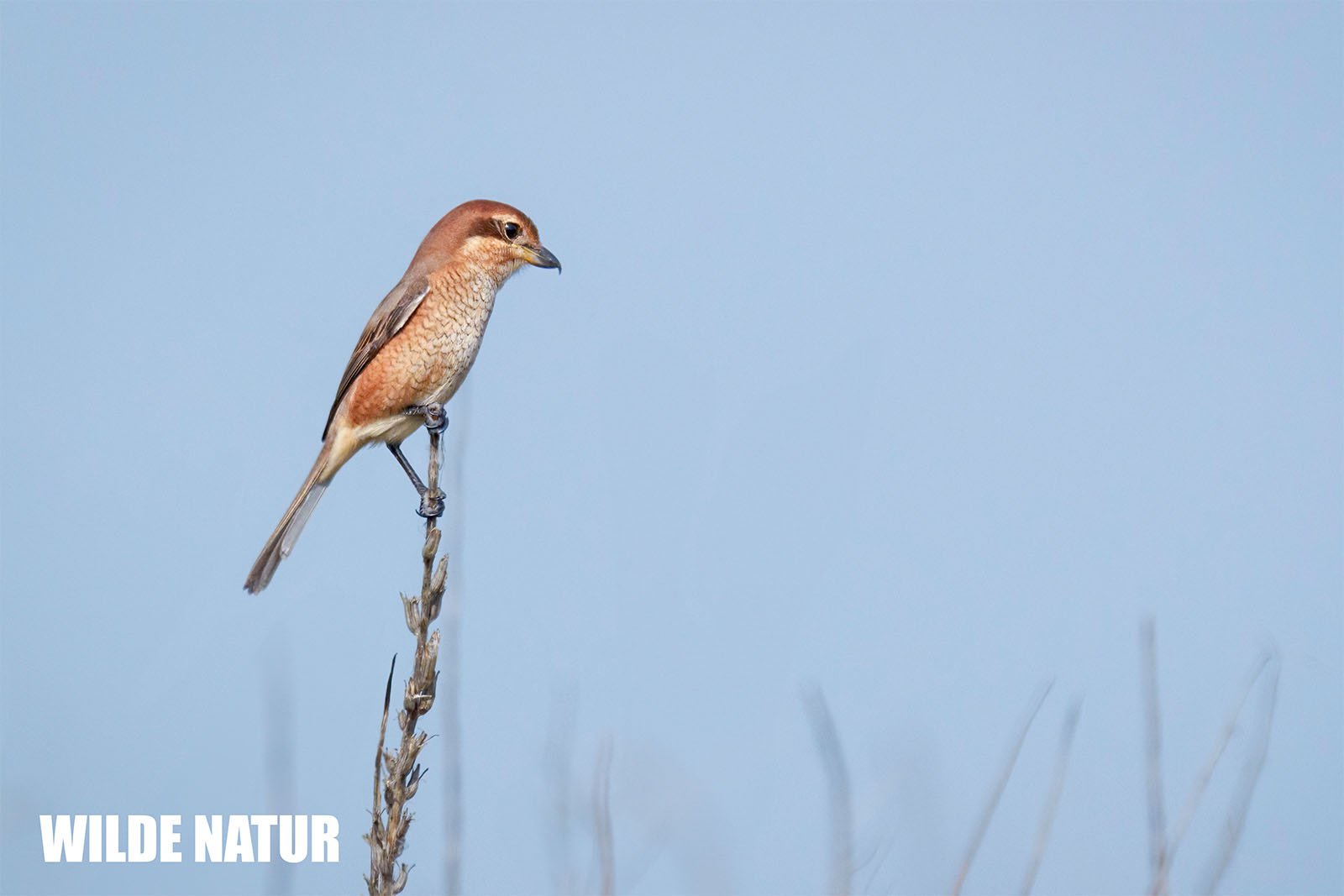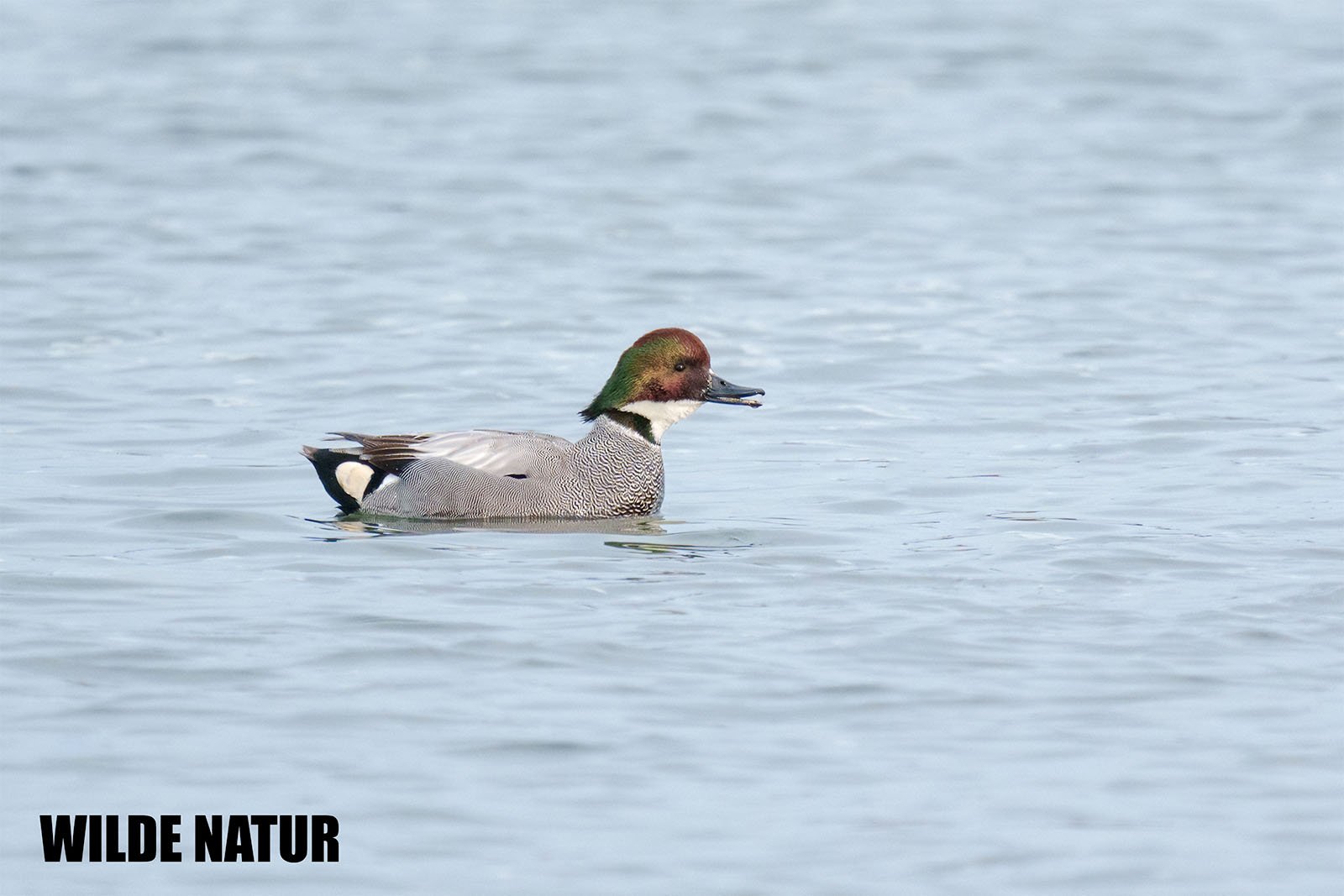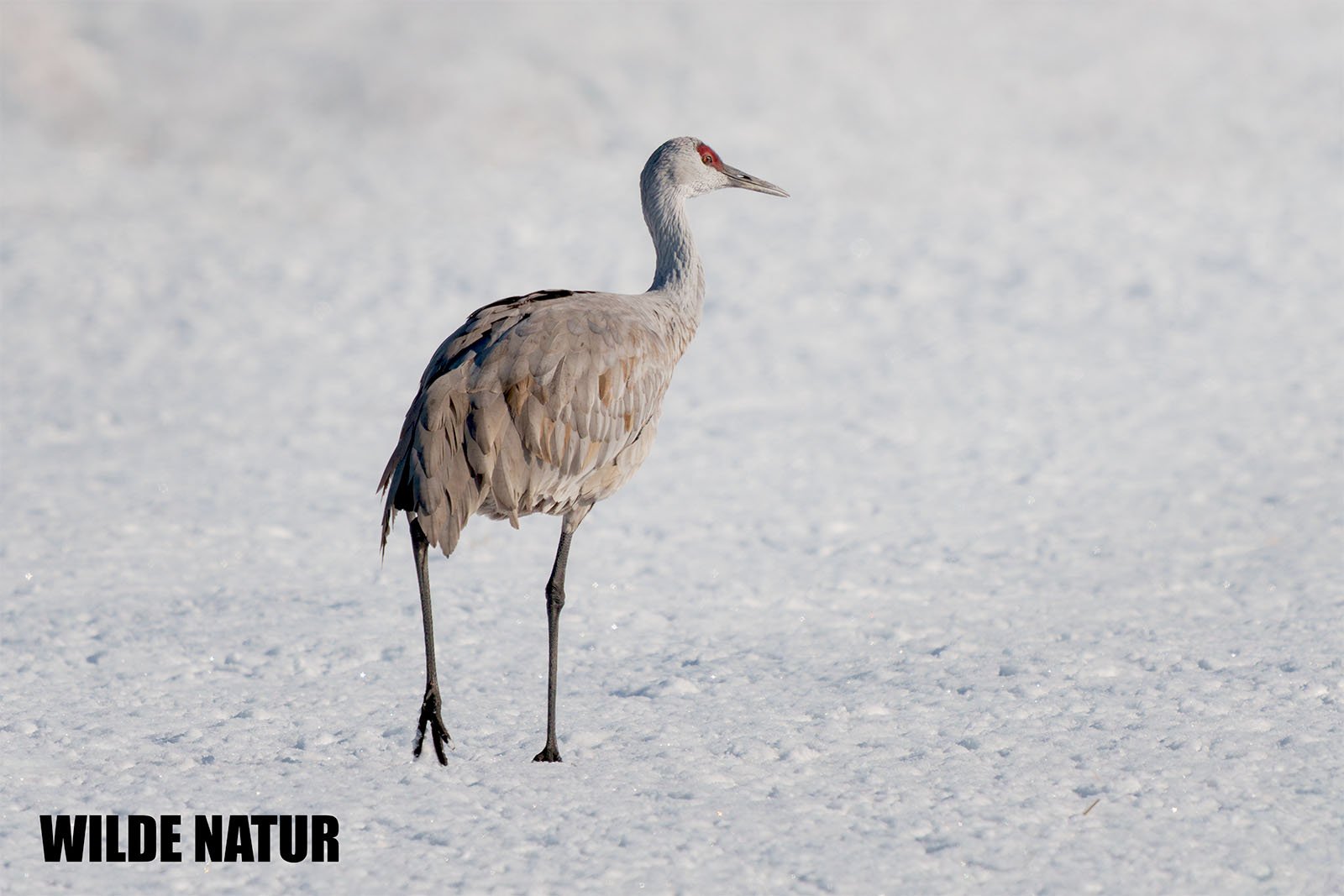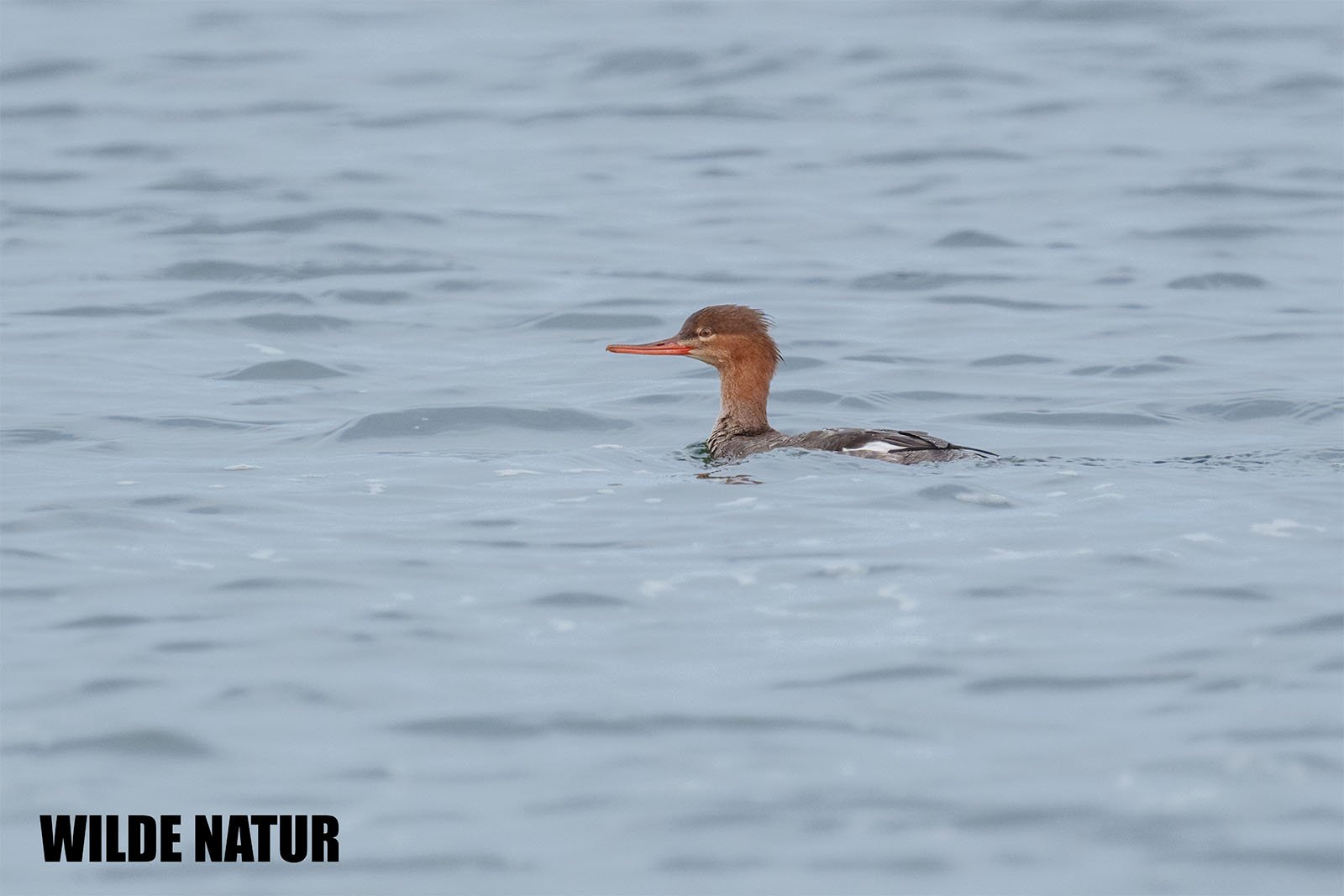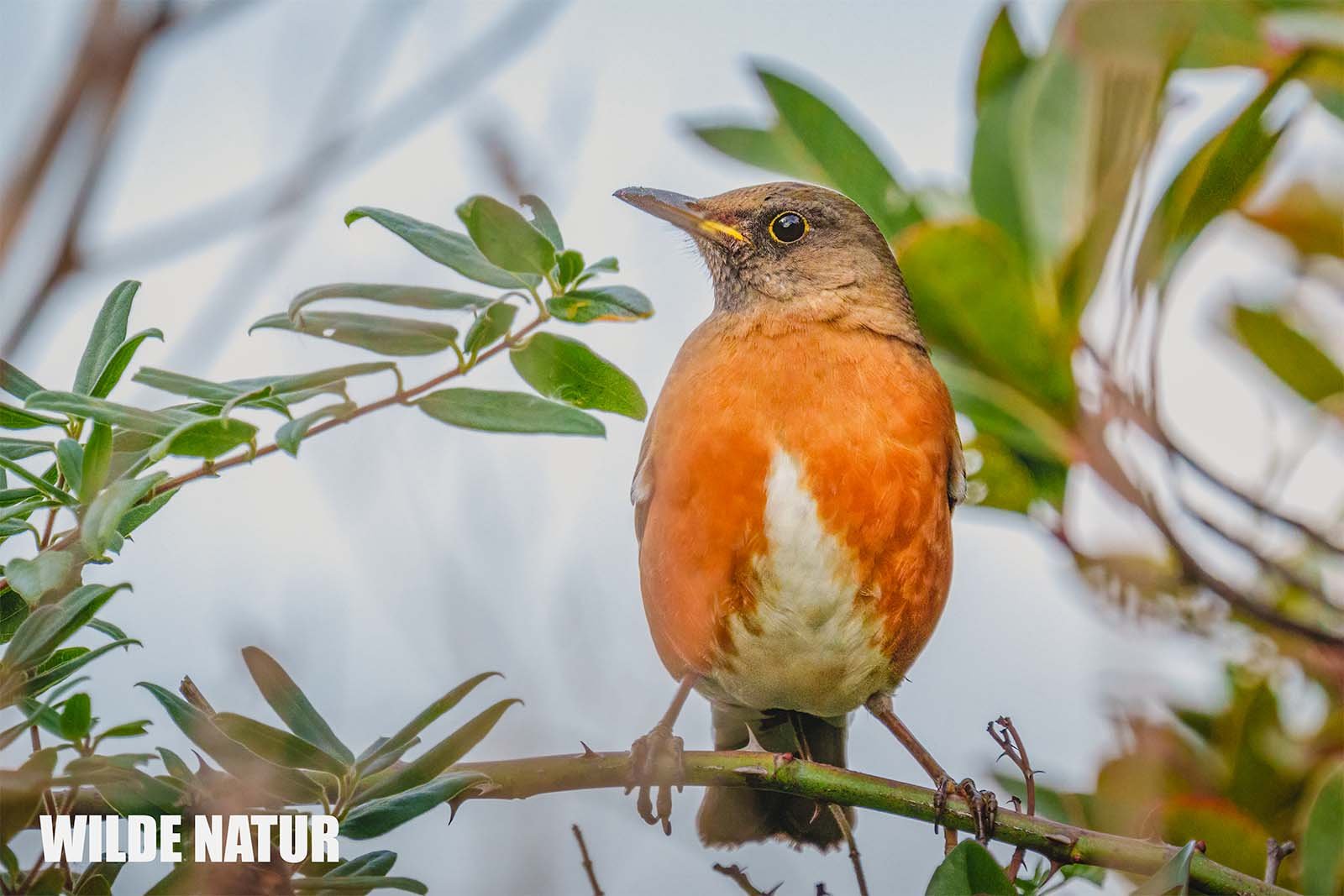Firecrest (Regulus ignicapilla)
Firecrest (Regulus ignicapilla)
Quick Facts
- Size: 9 to 10 cm
- Weight: 5 to 7 grams
- Plumage: Yellow-green on top, pale underneath – striking head markings
- Habitat: Mixed and deciduous forests, parks, Mediterranean scrubland
- Diet: Insects, spiders, springtails (especially for chicks)
- Breeding season: Spring and summer
- Nest: Built by both male and female
- Migration: Short-distance migrant
- Call: High-pitched, monotonous “zizizizizii”
Table of Contents
- Introduction: Small, Quick, and Often Overlooked
- Size and Build: A Featherweight with Climbing Skills
- Coloration and Head Markings: Distinct and Eye-Catching
- Call: A High “zizizizizii” – The Forest’s Background Sound
- Habitat: Adaptable, But Not Undemanding
- Diet: From Spiders to Springtails
- Breeding: Carefully Built and Well Hidden
- Winter Migration: Off to Milder Regions
- FAQ – Frequently Asked Questions about the Firecrest
Introduction: Small, Quick, and Often Overlooked
If you spot a tiny shimmering blur darting between branches in the forest, you might be looking at one of Europe’s smallest songbirds: the Firecrest. Despite its tiny size, it’s hard to overlook. In this article, you’ll get to know this small but mighty bird a little better.
Size and Build: A Featherweight with Climbing Skills
The Firecrest measures just 9 to 10 centimeters and weighs only 5 to 7 grams, making it one of the lightest songbirds in Europe.
Its slender feet seem perfectly designed for balancing on branches and for climbing through the treetops. The sharp, dark beak leaves no doubt: this is a quick and precise insect hunter.
Coloration and Head Markings: Distinct and Eye-Catching
The plumage is striking and elegant at first glance:
- Upperparts: vibrant yellow-green
- Underparts: pale, almost creamy
- Crown stripe: orange in males, yellow in females
The head is especially noticeable:
A bold white stripe above the eye and a black eye-stripe underneath create a sharp contrast, giving the bird its distinct facial appearance.
This makes it easy to distinguish from the Goldcrest (its close relative), which has softer, less contrasting features.
Call: A High “zizizizizii” – The Forest’s Background Sound
The Firecrest’s song is a high-pitched, soft “zizizizizii”, more monotonous and steady than that of the Goldcrest.
It lacks the more elaborate ending of its cousin’s song, but instead offers a calm and consistent sound that blends into the treetops.
Habitat: Adaptable, But Not Undemanding
While the Firecrest can adapt to various environments, it clearly prefers:
- Mixed forests
- Deciduous forests
- Parks and large gardens
Unlike the Goldcrest, it doesn’t rely as heavily on coniferous trees. Interestingly, it often searches for food in the mid-levels of the forest canopy.
Diet: From Spiders to Springtails
In everyday life, the Firecrest hunts mainly:
- Insects, especially larvae
- Spiders
During the breeding season, its diet becomes more diverse: it often feeds its chicks springtails – tiny arthropods that are perfect for young birds.
Breeding: Carefully Built and Well Hidden
Is nest-building a female task only? Not at all – both the male and female work together to build the nest with great skill and instinct.
They mainly use:
- Moss and lichens, which provide insulation and camouflage
Winter Migration: Off to Milder Regions
As autumn arrives, most Firecrests head off to warmer areas:
- Southwest Europe
- Especially southern France, Spain, and even North Africa
They spend the winter there, returning to Central Europe in time for the spring breeding season. This is typical behavior for a short-distance migrant, taking advantage of the best conditions throughout the year.
FAQ – Frequently Asked Questions about the Firecrest
How much does a Firecrest weigh?
Between 5 and 7 grams – about as much as a sheet of paper.
How is it different from the Goldcrest?
It’s slightly larger, more colorful, and has a sharper, more defined facial pattern.
Where can I spot one?
In mixed and deciduous forests, parks, and large gardens.
When is its breeding season?
In spring and summer. The nest is built and well hidden by both parents.
Where does it go in winter?
It migrates to the southwest – particularly southern France, Spain, and North Africa.


